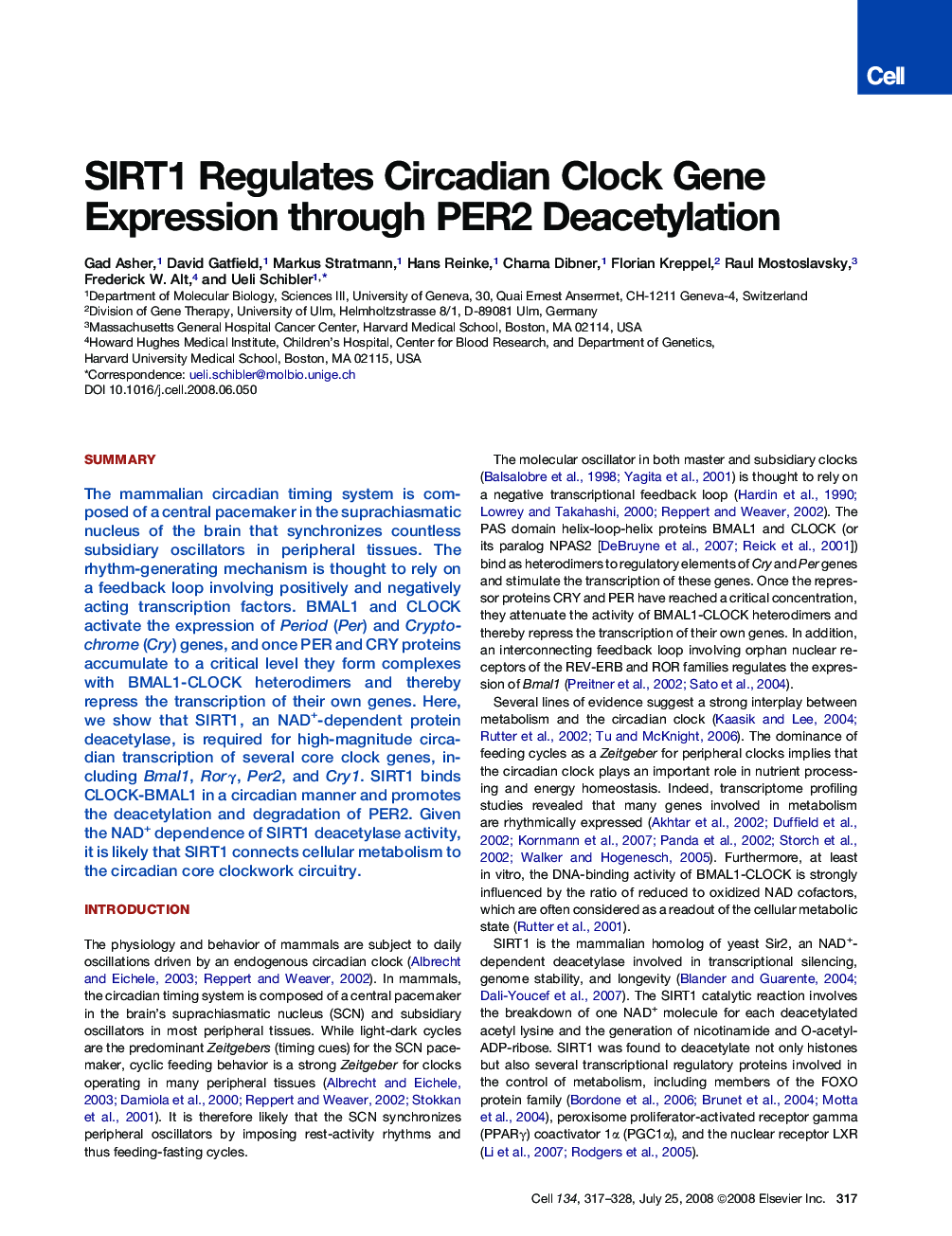| Article ID | Journal | Published Year | Pages | File Type |
|---|---|---|---|---|
| 2037327 | Cell | 2008 | 12 Pages |
SummaryThe mammalian circadian timing system is composed of a central pacemaker in the suprachiasmatic nucleus of the brain that synchronizes countless subsidiary oscillators in peripheral tissues. The rhythm-generating mechanism is thought to rely on a feedback loop involving positively and negatively acting transcription factors. BMAL1 and CLOCK activate the expression of Period (Per) and Cryptochrome (Cry) genes, and once PER and CRY proteins accumulate to a critical level they form complexes with BMAL1-CLOCK heterodimers and thereby repress the transcription of their own genes. Here, we show that SIRT1, an NAD+-dependent protein deacetylase, is required for high-magnitude circadian transcription of several core clock genes, including Bmal1, Rorγ, Per2, and Cry1. SIRT1 binds CLOCK-BMAL1 in a circadian manner and promotes the deacetylation and degradation of PER2. Given the NAD+ dependence of SIRT1 deacetylase activity, it is likely that SIRT1 connects cellular metabolism to the circadian core clockwork circuitry.
